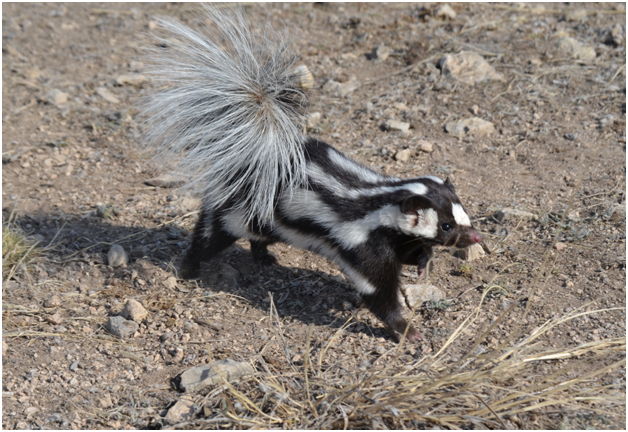Western Spotted Skunk
Spilogale gracilis
Description:
These skunks have large bodies that are low to the ground with a small tapered head. The nose is short and rounded. The head and body length is typically 4 ½-13 ½ inches and the tail length can reach up to 6 inches. Males are slightly larger than females. The hair is longest on the tail and shortest on the head. They are black with white stripes that appear to be more like spots than stripes. There is a small white spot on the forehead and one in front of each ear. There are six distinct white stripes on the anterior part of the body. The posterior part of the body has two interrupted white bands, and one spot on each side of the rump and two more at the base of the tail.
Habitat:
The western spotted skunk prefers rocky bluffs and brush-bordered canyon stream beds. They make dens in rocky outcrops or hollow logs in the wild; however, they often live in close association with people, frequently nesting in rock fences or even attics.
Range:
The geographic range of the Western Spotted Skunk extends from central Mexico through the western United States to British Columbia.
Diet:
Skunks are omnivores. They enjoy eggs (wild or domestic, especially turkey eggs), young rabbits, fruit and berries, mice, voles, roots, and even arthropods such as grasshoppers.
Breeding:
Breeding takes place in September. After a gestation that usually lasts 210-230 days, a litter of between 2 and 5 young are born in late April or may. Baby skunks are called kits.
mtm 2-3-21/ok


